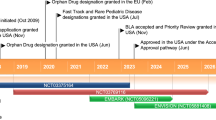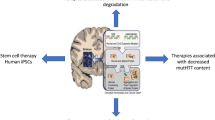Abstract
A composite cytomegalovirus-immediate early gene enhancer/chicken β-actin promoter (CAG) was utilized to generate transgenic mice that overexpress human spermidine synthase (SpdS) to determine the impact of elevated spermidine synthase activity on murine development and physiology. CAG-SpdS mice were viable and fertile and tissue SpdS activity was increased up to ninefold. This increased SpdS activity did not result in a dramatic elevation of spermidine or spermine levels but did lead to a 1.5- to 2-fold reduction in tissue spermine:spermidine ratio in heart, muscle and liver tissues with the highest levels of SpdS activity. This new mouse model enabled simultaneous overexpression of SpdS and other polyamine biosynthetic enzymes by combining transgenic animals. The combined overexpression of both SpdS and spermine synthase (SpmS) in CAG-SpdS/CAG-SpmS bitransgenic mice did not impair viability or lead to overt developmental abnormalities but instead normalized the elevated tissue spermine:spermidine ratios of CAG-SpmS mice. The CAG-SpdS mice were bred to MHC-AdoMetDC mice with a >100-fold increase in cardiac S-adenosylmethionine decarboxylase (AdoMetDC) activity to determine if elevated dcAdoMet would facilitate greater spermidine accumulation in mice with SpdS overexpression. CAG-SpdS/MHC-AdoMetDC bitransgenic animals were produced at the expected frequency and exhibited cardiac polyamine levels comparable to MHC-AdoMetDC littermates. Taken together these results indicate that SpdS levels are not rate limiting in vivo for polyamine biosynthesis and are unlikely to exert significant regulatory effects on cellular polyamine content and function.


Similar content being viewed by others
Abbreviations
- AdoMet:
-
S-Adenosylmethionine
- AdoMetDC:
-
S-Adenosylmethionine decarboxylase
- AZ:
-
Antizyme
- CAG:
-
Composite cytomegalovirus immediate early gene enhancer-chicken β-actin promoter
- dcAdoMet:
-
Decarboxylated S-adenosylmethionine
- DFMO:
-
α-Difluoromethylornithine
- Gy:
-
Gyro
- HA:
-
Hemagglutinin
- MHC:
-
α-Myosin heavy chain
- ODC:
-
Ornithine decarboxylase
- PCR:
-
Polymerase chain reaction
- SpdS:
-
Spermidine synthase
- SpmS:
-
Spermine synthase
References
Basuroy UK, Gerner EW (2006) Emerging concepts in targeting the polyamine metabolic pathway in epithelial cancer chemoprevention and chemotherapy. J Biochem 139(1):27–33
Becerra-Solano LE, Butler J, Castaneda-Cisneros G, McCloskey DE, Wang X, Pegg AE, Schwartz CE, Sanchez-Corona J, Garcia-Ortiz JE (2009) A missense mutation, p.V132G, in the X-linked spermine synthase gene (SMS) causes Snyder-Robinson syndrome. Am J Med Genet A 149A(3):328–335
Casero RA Jr, Marton LJ (2007) Targeting polyamine metabolism and function in cancer and other hyperproliferative diseases. Nat Rev Drug Discov 6(5):373–390
Cason AL, Ikeguchi Y, Skinner C, Wood TC, Holden KR, Lubs HA, Martinez F, Simensen RJ, Stevenson RE, Pegg AE, Schwartz CE (2003) X-linked spermine synthase gene (SMS) defect: the first polyamine deficiency syndrome. Eur J Hum Genet 11(12):937–944
Chattopadhyay MK, Tabor CW, Tabor H (2002) Absolute requirement of spermidine for growth and cell cycle progression of fission yeast (Schizosaccharomyces pombe). Proc Natl Acad Sci USA 99(16):10330–10334
de Alencastro G, McCloskey DE, Kliemann SE, Maranduba CM, Pegg AE, Wang X, Bertola DR, Schwartz CE, Passos-Bueno MR, Sertie AL (2008) New SMS mutation leads to a striking reduction in spermine synthase protein function and a severe form of Snyder-Robinson X-linked recessive mental retardation syndrome. J Med Genet 45(8):539–543
Eisenberg T, Knauer H, Schauer A, Buttner S, Ruckenstuhl C, Carmona-Gutierrez D, Ring J, Schroeder S, Magnes C, Antonacci L, Fussi H, Deszcz L, Hartl R, Schraml E, Criollo A, Megalou E, Weiskopf D, Laun P, Heeren G, Breitenbach M, Grubeck-Loebenstein B, Herker E, Fahrenkrog B, Frohlich KU, Sinner F, Tavernarakis N, Minois N, Kroemer G, Madeo F (2009) Induction of autophagy by spermidine promotes longevity. Nat Cell Biol 11(11):1305–1314
Feith DJ, Shantz LM, Pegg AE (2001) Targeted antizyme expression in the skin of transgenic mice reduces tumor promoter induction of ornithine decarboxylase and decreases sensitivity to chemical carcinogenesis. Cancer Res 61(16):6073–6081
Feith DJ, Shantz LM, Shoop PL, Keefer KA, Prakashagowda C, Pegg AE (2007) Mouse skin chemical carcinogenesis is inhibited by antizyme in promotion-sensitive and promotion-resistant genetic backgrounds. Mol Carcinog 46(6):453–465
Forshell TP, Rimpi S, Nilsson JA (2010) Chemoprevention of B-cell lymphomas by inhibition of the Myc target spermidine synthase. Cancer Prev Res (Phila) 3(2):140–147
Heby O, Persson L, Rentala M (2007) Targeting the polyamine biosynthetic enzymes: a promising approach to therapy of African sleeping sickness, Chagas’ disease, and leishmaniasis. Amino Acids 33(2):359–366
Heljasvaara R, Veress I, Halmekyto M, Alhonen L, Janne J, Laajala P, Pajunen A (1997) Transgenic mice overexpressing ornithine and S-adenosylmethionine decarboxylases maintain a physiological polyamine homoeostasis in their tissues. Biochem J 323(Pt 2):457–462
Ikeguchi Y, Wang X, McCloskey DE, Coleman CS, Nelson P, Hu G, Shantz LM, Pegg AE (2004) Characterization of transgenic mice with widespread overexpression of spermine synthase. Biochem J 381(Pt 3):701–707
Ikeguchi Y, Bewley MC, Pegg AE (2006) Aminopropyltransferases: function, structure and genetics. J Biochem 139(1):1–9
Janne J, Alhonen L, Pietila M, Keinanen TA (2004) Genetic approaches to the cellular functions of polyamines in mammals. Eur J Biochem 271(5):877–894
Janne J, Alhonen L, Pietila M, Keinanen TA, Uimari A, Hyvonen MT, Pirinen E, Jarvinen A (2006) Genetic manipulation of polyamine catabolism in rodents. J Biochem 139(2):155–160
Kauppinen L, Myohanen S, Halmekyto M, Alhonen L, Janne J (1993) Transgenic mice over-expressing the human spermidine synthase gene. Biochem J 293(Pt 2):513–516
Mackintosh CA, Pegg AE (2000) Effect of spermine synthase deficiency on polyamine biosynthesis and content in mice and embryonic fibroblasts, and the sensitivity of fibroblasts to 1,3-bis-(2-chloroethyl)-N-nitrosourea. Biochem J 351(Pt 2):439–447
Madeo F, Tavernarakis N, Kroemer G (2010) Can autophagy promote longevity? Nat Cell Biol 12(9):842–846
Nisenberg O, Pegg AE, Welsh PA, Keefer K, Shantz LM (2006) Overproduction of cardiac S-adenosylmethionine decarboxylase in transgenic mice. Biochem J 393(Pt 1):295–302
Nishimura K, Nakatsu F, Kashiwagi K, Ohno H, Saito T, Igarashi K (2002) Essential role of S-adenosylmethionine decarboxylase in mouse embryonic development. Genes Cells 7(1):41–47
O’Brien TG, Megosh LC, Gilliard G, Soler AP (1997) Ornithine decarboxylase overexpression is a sufficient condition for tumor promotion in mouse skin. Cancer Res 57(13):2630–2637
Park MH, Nishimura K, Zanelli CF, Valentini SR (2010) Functional significance of eIF5A and its hypusine modification in eukaryotes. Amino Acids 38(2):491–500
Pegg AE (2006) Regulation of ornithine decarboxylase. J Biol Chem 281(21):14529–14532
Pegg AE (2009a) Mammalian polyamine metabolism and function. IUBMB Life 61(9):880–894
Pegg AE (2009b) S-Adenosylmethionine decarboxylase. Essays Biochem 46:25–45
Pegg AE, Wang X (2009) Mouse models to investigate the function of spermine. Commun Integr Biol 2(3):271–274
Pegg AE, Wechter R, Poulin R, Woster PM, Coward JK (1989) Effect of S-adenosyl-1, 12-diamino-3-thio-9-azadodecane, a multisubstrate adduct inhibitor of spermine synthase, on polyamine metabolism in mammalian cells. Biochemistry 28(21):8446–8453
Pegg AE, Feith DJ, Fong LY, Coleman CS, O’Brien TG, Shantz LM (2003) Transgenic mouse models for studies of the role of polyamines in normal, hypertrophic and neoplastic growth. Biochem Soc Trans 31(2):356–360
Pegg AE, Wang X, Schwartz CE, McCloskey DE (2011) Spermine synthase activity affects the content of decarboxylated S-adenosylmethionine. Biochem J 433(1):139–144
Pendeville H, Carpino N, Marine JC, Takahashi Y, Muller M, Martial JA, Cleveland JL (2001) The ornithine decarboxylase gene is essential for cell survival during early murine development. Mol Cell Biol 21(19):6549–6558
Rider JE, Hacker A, Mackintosh CA, Pegg AE, Woster PM, Casero RA Jr (2007) Spermine and spermidine mediate protection against oxidative damage caused by hydrogen peroxide. Amino Acids 33(2):231–240
Sawicki JA, Morris RJ, Monks B, Sakai K, Miyazaki J (1998) A composite CMV-IE enhancer/beta-actin promoter is ubiquitously expressed in mouse cutaneous epithelium. Exp Cell Res 244(1):367–369
Shantz LM, Levin VA (2007) Regulation of ornithine decarboxylase during oncogenic transformation: mechanisms and therapeutic potential. Amino Acids 33(2):213–223
Shantz LM, Feith DJ, Pegg AE (2001) Targeted overexpression of ornithine decarboxylase enhances beta-adrenergic agonist-induced cardiac hypertrophy. Biochem J 358(Pt 1):25–32
Wallace HM, Fraser AV, Hughes A (2003) A perspective of polyamine metabolism. Biochem J 376(Pt 1):1–14
Wang X, Ikeguchi Y, McCloskey DE, Nelson P, Pegg AE (2004) Spermine synthesis is required for normal viability, growth, and fertility in the mouse. J Biol Chem 279(49):51370–51375
Wang X, Levic S, Gratton MA, Doyle KJ, Yamoah EN, Pegg AE (2009) Spermine synthase deficiency leads to deafness and a profound sensitivity to alpha-difluoromethylornithine. J Biol Chem 284(2):930–937
Wiest L, Pegg AE (1998) Assay of spermidine and spermine synthases. Methods Mol Biol 79:51–57
Wu H, Min J, Ikeguchi Y, Zeng H, Dong A, Loppnau P, Pegg AE, Plotnikov AN (2007) Structure and mechanism of spermidine synthases. Biochemistry 46(28):8331–8339
Wu G, Bazer FW, Davis TA, Kim SW, Li P, Marc Rhoads J, Carey Satterfield M, Smith SB, Spencer TE, Yin Y (2009) Arginine metabolism and nutrition in growth, health and disease. Amino Acids 37(1):153–168
Acknowledgments
The authors wish to thank Tom Salada of the Penn State University Transgenic Mouse Facility for microinjection of the CAG-SpdS construct, the Penn State University College of Medicine Macromolecular Synthesis and DNA Sequencing Cores, and the technicians of the Penn State University College of Medicine Department of Comparative Medicine for expert animal care. We thank Dr. J.A. Sawicki for providing the pCX-EGFP plasmid and Dr. M. Okabe for permission to use this construct in our experiments. Supported by National Institutes of Health grants CA-018138 (DJF) and GM-26290 (AEP).
Conflict of interest
The authors declare that they have no conflict of interest.
Author information
Authors and Affiliations
Corresponding author
Rights and permissions
About this article
Cite this article
Shi, C., Welsh, P.A., Sass-Kuhn, S. et al. Characterization of transgenic mice with overexpression of spermidine synthase. Amino Acids 42, 495–505 (2012). https://doi.org/10.1007/s00726-011-1028-6
Received:
Accepted:
Published:
Issue Date:
DOI: https://doi.org/10.1007/s00726-011-1028-6




